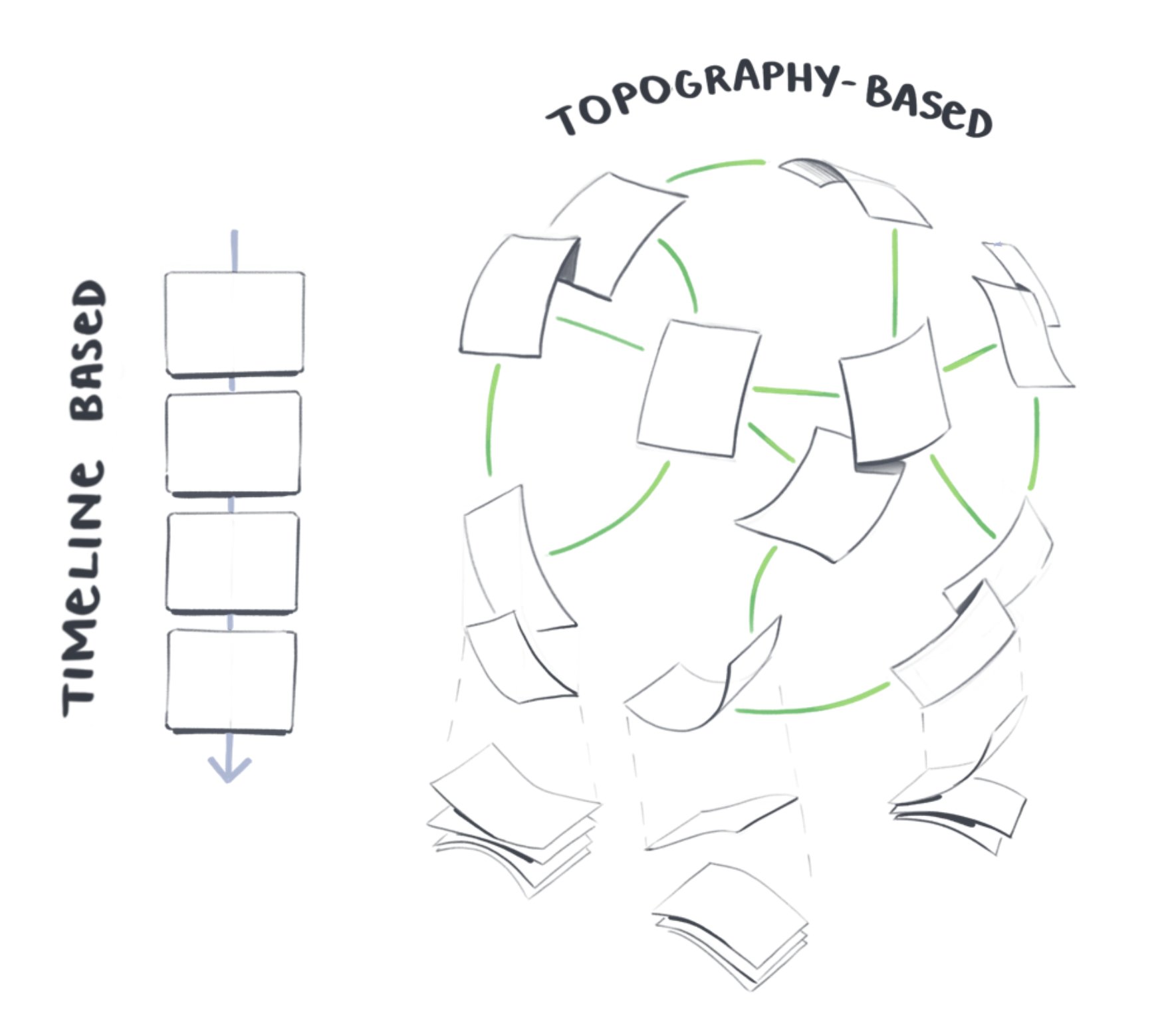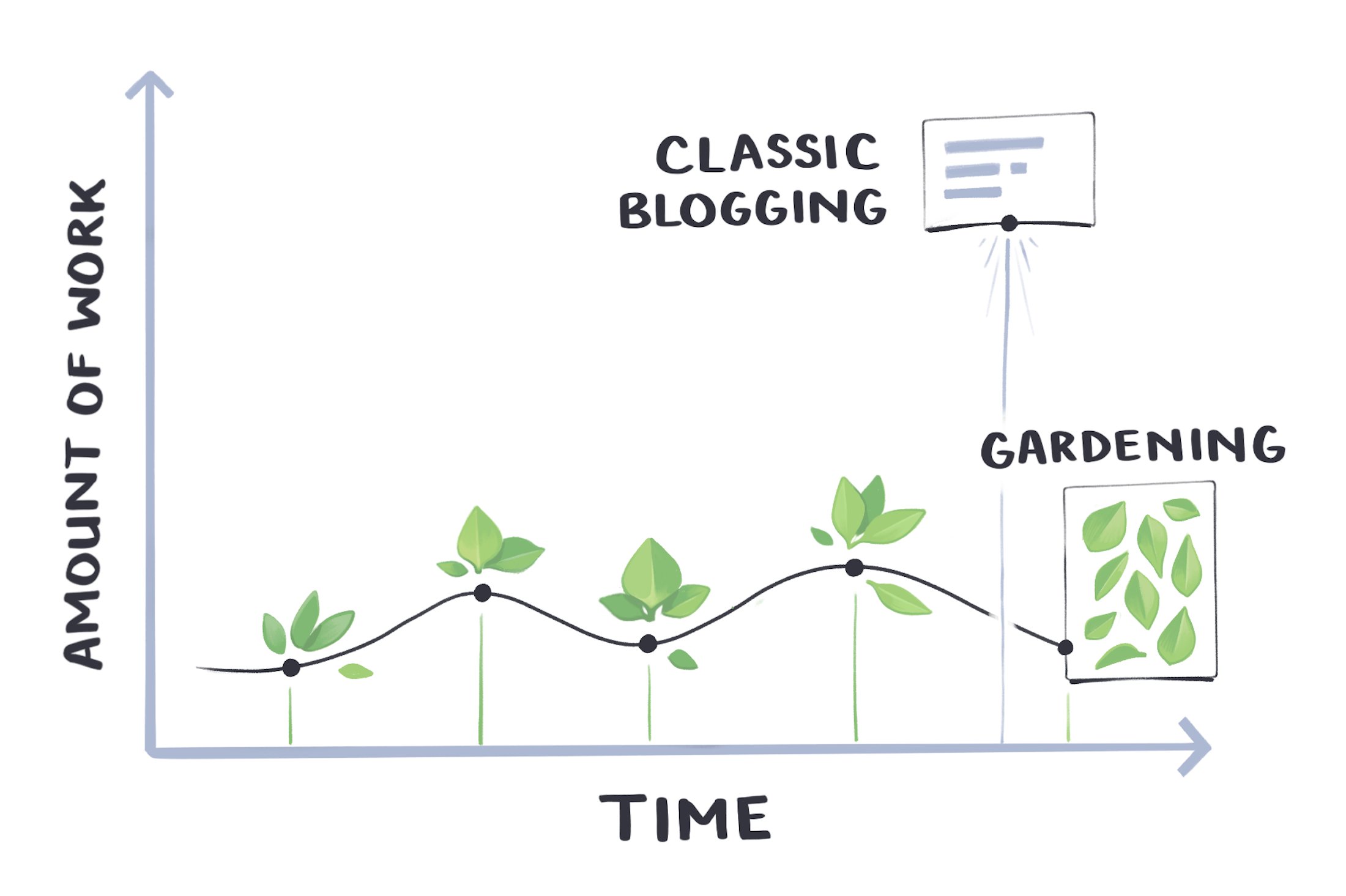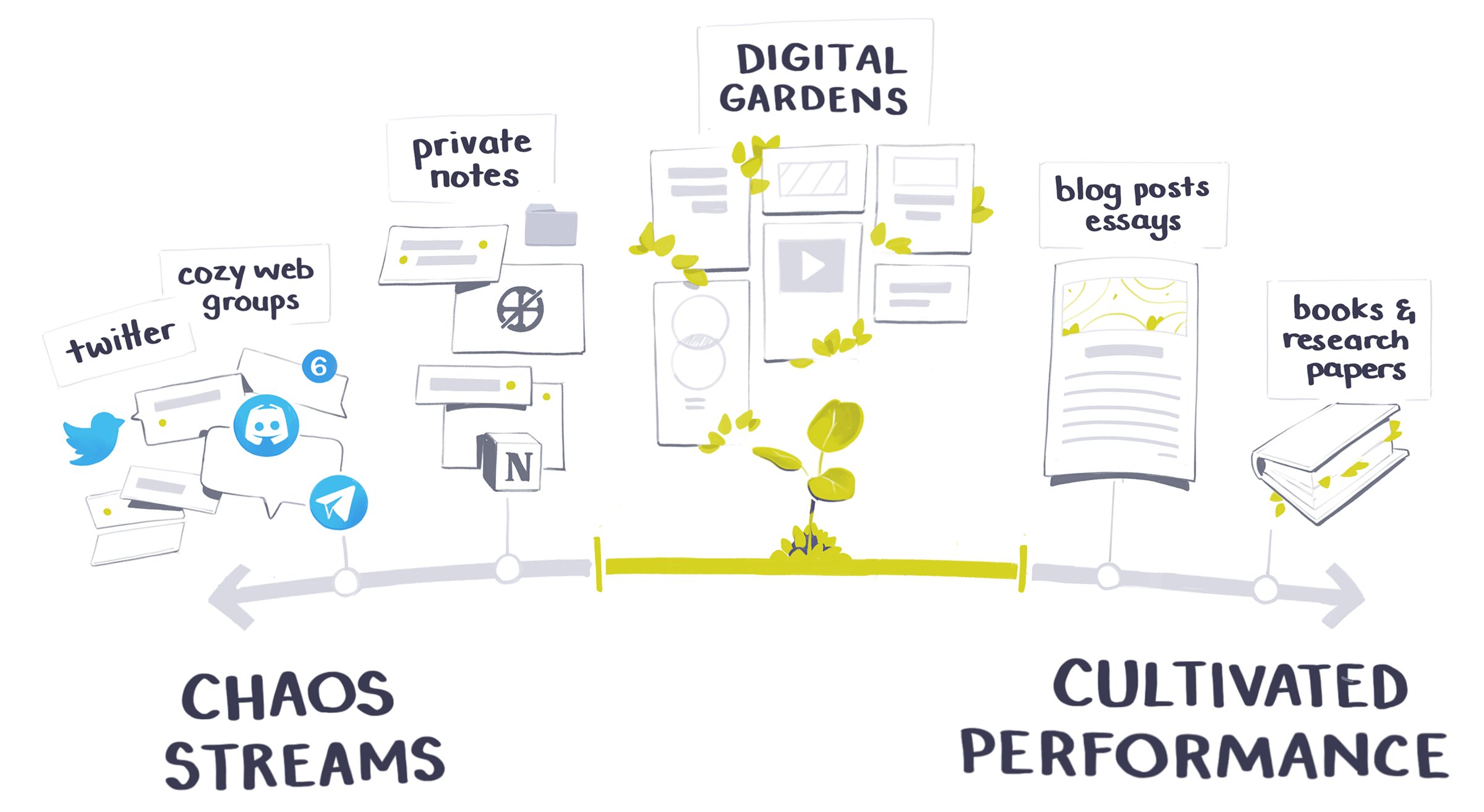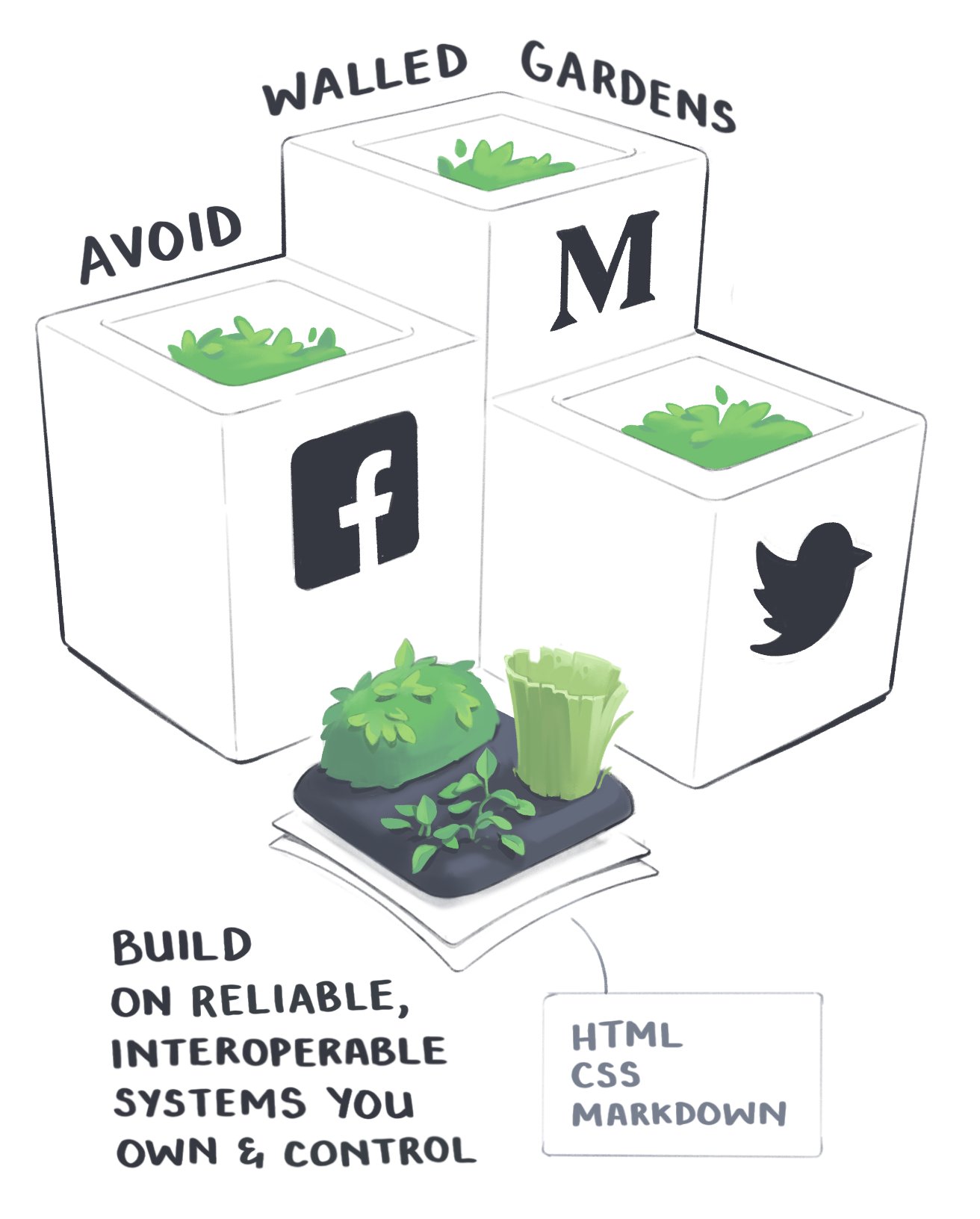It's best to read from Maggie Appleton the history and benefits of a Digital Garden [here](https://maggieappleton.com/garden-history)
Some interesting snips from her writing and graphics. All credit to her.
## What is a digital garden?
There are three different types of note-takers:
- The architect
- The gardener
- The librarian
In a nutshell, architects like to **_plan_**, gardeners like to **_cultivate_**, and librarians like to **_collect_**.
A digital garden, in the note-taking sense, is a **collection of loosely organized notes** that you allow to grow and develop _over time_.
Your notes become like **houseplants** that you watch and care for as they develop. You plant the seed, and continue to revisit the idea again and again, until it either withers and dies _or_ grows to be something truly spectacular.
It may sound wasteful to treat your notes like this—after all, why revisit a note over and over again?—and if it sounds wasteful to you, then perhaps you’re not a gardener. But most of our ideas and thoughts change and evolve over time, and creating a digital garden allows you to _see_ that change and control it.
----
### 1.Topography over timelines
- Digital Gardens are organised around **contextual relationships and associative links**; the concepts and themes within each note determine how it's connected to others.

### 2. Continuous Growth
- Digital Gardens are never finished, they're constantly growing, evolving and changing.
- What you publish is always open to revision and expansion
- Designed to evolve alongside your thoughts.

### 3. Imperfection & learning in public
- Gardens are imperfect by design. They don't hide their rough edges or claim to be a permanent source of truth.
- They're more coherent than chat feeds, but less polished than a blog post – in between chaos streams and cultivated performance

### 4. Playful, personal, and experimental
- Gardens are non-homogenous by nature.
- You can plant the same seeds as your neighbour, but you'll always end up with a different arrangement of plants.
- No two gardens are alike, and we should treat them as a personal, experimental play space
![[Pasted image 20210704134118.png]]
### 5. Intercropping and content diversity
- Gardens are not just a collection of interlinked words.
- Podcasts, videos, diagrams, illustrations, interactive web animations, academic papers, tweets, rough sketches, and code snippets should all live and grow in the garden.

### 5. Independent ownership
- Gardening is about claiming a small patch of the web for yourself, one you fully own and control It shouldn't live on the servers of Twitter, Facebook, or Medium.
- None of these platforms are designed to help you slowly build and weave personal knowledge
